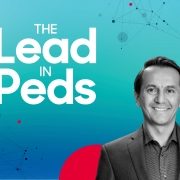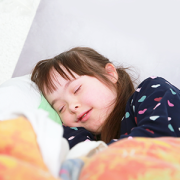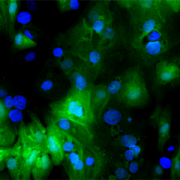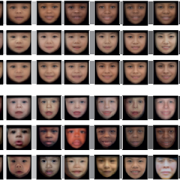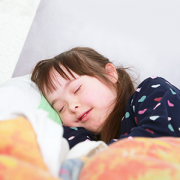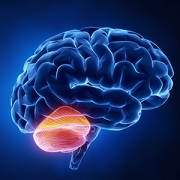Tag Archive for: Down syndrome
Study finds delayed oligodendrocyte progenitor maturation in Down syndrome

People with Down syndrome (DS) can have moderate to severe intellectual disability, which is thought to be associated with changes in early brain development.
People with Down syndrome (DS) can have moderate to severe intellectual disability, which is thought to be associated with changes in early brain development. Children’s National Hospital experts discovered delayed maturation in oligodendrocyte progenitors in DS. Oligodendrocytes produce the white matter which insulates neural pathways and ensures speedy electrical communication in the brain. The researchers identified these delays by measuring gene expression at key steps in cell development, according to a new study published in Frontiers in Cellular Neuroscience.
The findings further suggest that brain and spinal cord oligodendrocytes differ in their developmental trajectories and that “brain-like” oligodendrocyte progenitors were most different from control cells, indicating that oligodendrocytes in the brains of people with DS are not equally affected by the trisomy 21.
“This is one of the critical steps towards identifying the key stages and molecular players in the DS white matter deficits,” said Tarik Haydar, Ph.D., director of the Center for Neuroscience Research. “With this knowledge, and with further work in this direction, we envision future therapies that may improve nerve cell communication in the brains of people with Down syndrome.”
The hold-up in the field
The mechanisms that lead to the reduction of white matter in the brains of people with DS are unknown. To better understand early neural precursors, they used isogenic pluripotent stem cell lines derived from two individuals with Down syndrome to study the brain development and spinal cord oligodendrocytes.
“I was excited that we discovered another example of how important it is not to generalize when studying DS brain development,” said Haydar. “This is one of several papers, from our group and others, that demonstrate how important it is to be very specific about the brain area and the developmental stage when investigating the causes of DS brain dysfunction.”
What’s next
Dysmaturation of oligodendrocyte cells are a relatively new discovery by the Haydar Lab, one of the preeminent labs in DS research. These results isolate specific steps that are affected in human cells with trisomy 21. They are using these results to develop a drug screening platform that may prevent altered generation of oligodendrocytes in the future.
You can read the full study “Sonic Hedgehog Pathway Modulation Normalizes Expression of Olig2 in Rostrally Patterned NPCs With Trisomy 21” in Frontiers in Cellular Neuroscience.
$2.13M grant accelerates treatments for kids with Down syndrome experiencing respiratory viruses
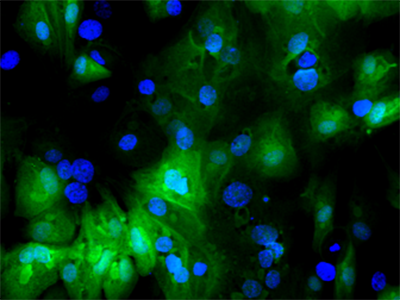
Children’s National Hospital received a combined $2.13 million award from the National Institutes of Health’s (NIH) National Heart, Lung and Blood Institute to better understand the mechanisms of severe viral respiratory infections in patients with Down syndrome and to develop new diagnostic tools and innovative precision medicine approaches for this vulnerable population.
“We have a unique opportunity to discover novel targets that can treat severe viral respiratory infections, including SARS-CoV-2,” said Gustavo Nino, M.D., M.S.H.S., D’A.B.S.M., principal investigator in the Center for Genetic Medicine at Children’s National. “Part of the award will help us accelerate the development of these novel approaches to prevent severe respiratory infections caused by SARS-CoV-2 and other viruses like respiratory syncytial virus infection (RSV) in children and adults with Down syndrome.”
Lower respiratory tract infections are a leading cause of hospitalization and death in children with Down syndrome. Those children have a nine times higher risk for hospitalization and mortality due to respiratory viruses that cause lower respiratory tract infections.
Chromosome 21, which is an extra chromosome copy found in patients with Down syndrome, encodes four of the six known interferon receptors, leading to hyperactivation of interferon response in Down syndrome. With the central role of interferons focused on antiviral defense, it remains puzzling how interferon hyperactivation contributes to severe viral lower respiratory tract infections in children with Down syndrome. This is an area that the researchers will explore to better manage and treat viral lower respiratory tract infections in these patients, with the support of NIH’s INCLUDE initiative. INCLUDE provides institutions with grants to help clinical research and therapeutics to understand and diminish risk factors that influence the overall health, longevity, and quality of life for people with Down syndrome related to respiratory viruses.
“While many of the other studies focus on intellectual and other disabilities, we are exploring a novel viral respiratory infectious disease mechanism and are doing so by working directly with patients and patient-derived samples,” said Jyoti Jaiswal, M.Sc., Ph.D., senior investigator in the Center for Genetic Medicine Research at Children’s National.
Children with Down syndrome have historically been excluded in research related to airway antiviral immunity, which is a focus of this human-based transformative study to improve the health and survival of patients with Down syndrome. There is a critical need for studies that define targetable molecular and cellular mechanisms to address dysregulated antiviral responses in this patient population.
“The clinical expertise at Children’s National in studying Down syndrome and the work of our team in caring for these patients with respiratory and sleep disorders positions us well to pursue this work,” said Jaiswal. “This is further supplemented by our initial studies that have identified a novel mechanism of impaired airway antiviral responses in these patients.”
Congresswoman Eleanor Holmes Norton (D-DC) also celebrated Children’s National and its NIH research funding benefitting people with Down syndrome.
“I am pleased to congratulate Dr. Nino and staff on being the recipients of the National Heart, Lung, & Blood Institute grant. You were chosen from a competitive group of applicants and should be proud of this notable achievement,” said Norton in a letter. “By receiving this grant, you have demonstrated outstanding promise in your field. It is my hope that this grant will enable you to better the local and global community.”
Machine learning tool detects the risk of genetic syndromes
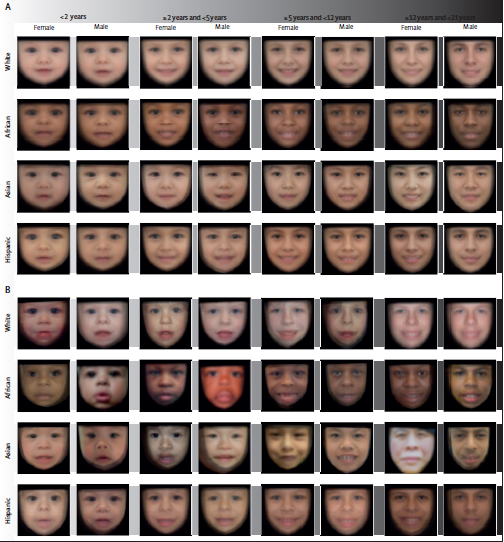
(A) Control population. (B) Population with Williams-Beuren syndrome. Average faces were generated for each demographic group after automatic face pose correction.
With an average accuracy of 88%, a deep learning technology offers rapid genetic screening that could accelerate the diagnosis of genetic syndromes, recommending further investigation or referral to a specialist in seconds, according to a study published in The Lancet Digital Health. Trained with data from 2,800 pediatric patients from 28 countries, the technology also considers the face variability related to sex, age, racial and ethnic background, according to the study led by Children’s National Hospital researchers.
“We built a software device to increase access to care and a machine learning technology to identify the disease patterns not immediately obvious to the human eye or intuition, and to help physicians non-specialized in genetics,” said Marius George Linguraru, D.Phil., M.A., M.Sc., principal investigator in the Sheikh Zayed Institute for Pediatric Surgical Innovation at Children’s National Hospital and senior author of the study. “This technological innovation can help children without access to specialized clinics, which are unavailable in most of the world. Ultimately, it can help reduce health inequality in under-resourced societies.”
This machine learning technology indicates the presence of a genetic syndrome from a facial photograph captured at the point-of-care, such as in pediatrician offices, maternity wards and general practitioner clinics.
“Unlike other technologies, the strength of this program is distinguishing ‘normal’ from ‘not-normal,’ which makes it an effective screening tool in the hands of community caregivers,” said Marshall L. Summar, M.D., director of the Rare Disease Institute at Children’s National. “This can substantially accelerate the time to diagnosis by providing a robust indicator for patients that need further workup. This first step is often the greatest barrier to moving towards a diagnosis. Once a patient is in the workup system, then the likelihood of diagnosis (by many means) is significantly increased.”
Every year, millions of children are born with genetic disorders — including Down syndrome, a condition in which a child is born with an extra copy of their 21st chromosome causing developmental delays and disabilities, Williams-Beuren syndrome, a rare multisystem condition caused by a submicroscopic deletion from a region of chromosome 7, and Noonan syndrome, a genetic disorder caused by a faulty gene that prevents normal development in various parts of the body.
Most children with genetic syndromes live in regions with limited resources and access to genetic services. The genetic screening may come with a hefty price tag. There are also insufficient specialists to help identify genetic syndromes early in life when preventive care can save lives, especially in areas of low income, limited resources and isolated communities.
“The presented technology can assist pediatricians, neonatologists and family physicians in the routine or remote evaluation of pediatric patients, especially in areas with limited access to specialized care,” said Porras et al. “Our technology may be a step forward for the democratization of health resources for genetic screening.”
The researchers trained the technology using 2,800 retrospective facial photographs of children, with or without a genetic syndrome, from 28 countries, such as Argentina, Australia, Brazil, China, France, Morocco, Nigeria, Paraguay, Thailand and the U.S. The deep learning architecture was designed to account for the normal variations in the face appearance among populations from diverse demographic groups.
“Facial appearance is influenced by the race and ethnicity of the patients. The large variety of conditions and the diversity of populations are impacting the early identification of these conditions due to the lack of data that can serve as a point of reference,” said Linguraru. “Racial and ethnic disparities still exist in genetic syndrome survival even in some of the most common and best-studied conditions.”
Like all machine learning tools, they are trained with the available dataset. The researchers expect that as more data from underrepresented groups becomes available, they will adapt the model to localize phenotypical variations within more specific demographic groups.
In addition to being an accessible tool that could be used in telehealth services to assess genetic risk, there are other potentials for this technology.
“I am also excited about the potential of the technology in newborn screening,” said Linguraru. “There are approximately 140 million newborns every year worldwide of which eight million are born with a serious birth defect of genetic or partially genetic origin, many of which are discovered late.”
Children’s National as well recently announced that it has entered into a licensing agreement with MGeneRx Inc. for its patented pediatric medical device technology. MGeneRx is a spinoff from BreakThrough BioAssets LLC, a life sciences technology operating company focused on accelerating and commercializing new innovations, such as this technology, with an emphasis on positive social impact.
“The social impact of this technology cannot be underestimated,” said Nasser Hassan, acting chief executive officer of MGeneRx Inc. “We are excited about this licensing agreement with Children’s National Hospital and the opportunity to enhance this technology and expand its application to populations where precision medicine and the earliest possible interventions are sorely needed in order to save and improve children’s lives.”
Characteristics of central breathing abnormalities in children with trisomy 21

Trisomy 21 (TS21), also known as Down syndrome, is the most common genetic syndrome in the United States. Many children with TS21 have a higher prevalence of sleep-related breathing disorders including central sleep apnea. While the mechanisms of central sleep apnea in TS21 are not completely understood, children with Down syndrome have multiple factors that make them more susceptible to developing central breathing abnormalities, including nervous system impairment, hypothyroidism and hypotonia.
In a recent multi-institutional study published in the journal Pediatric Pulmonology, Gustavo Nino, M.D., MSHS, D’ABSM, director of sleep medicine at Children’s National Hospital, and colleagues investigated the clinical features of central breathing abnormalities in TS21 across different pediatric age groups. The researchers also conducted analyses to look at the effects of biological sex and concomitant obstructive sleep apnea in children with central breathing abnormalities.
The authors conclude that “central breathing abnormalities are common in TS21 among young children (≤2 years of age) and in females older than 2 years of age,” and that “central apnea is often associated with concomitant obstructive sleep apnea and/or hypoxemia in children with TS21.”
Read the full study in Pediatric Pulmonology.
NIH grant supports research on locomotor dysfunction in Down Syndrome
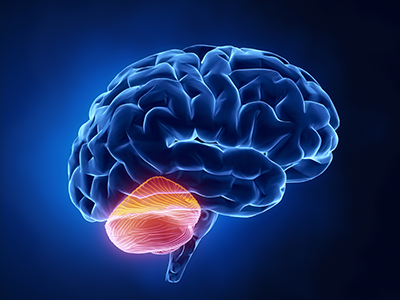
The National Institutes of Health (NIH) has granted the Children’s National Research Institute (CNRI) nearly $500,000 to better understand and identify specific alterations in the circuitry of the cerebellum that results in locomotor dysfunction in down syndrome.
Down syndrome (DS), the most commonly diagnosed chromosomal condition, affects a range of behavioral domains in children including motor and cognitive function. Cerebellar pathology has been consistently observed in DS, and is thought to contribute to dysfunction in locomotor and adaptive motor skills. However, the specific neural pathways underlying locomotor learning that are disrupted in DS remain poorly understood.
The National Institutes of Health (NIH) has granted the Children’s National Research Institute (CNRI) nearly $500,000 through their NIH-wide initiative INCLUDE – INvestigating Co-occurring conditions across the Lifespan to Understand Down syndrome – to better understand and identify specific alterations in the circuitry of the cerebellum that results in locomotor dysfunction in DS. The INCLUDE initiative aims to support the most promising high risk-high reward basic science.
“There is still a lot unknown about Down syndrome, in particular how fundamental cellular and physiological mechanisms of neural circuit function are altered in this syndrome,” says Vittorio Gallo, Ph.D., chief research officer at Children’s National Hospital and scientific director of CNRI. “Grant funding is particularly important to have the resources to develop and apply new cutting-edge methodology to study this neurodevelopmental disorder.”
The main goal of this research is to identify specific alterations in the circuitry of the cerebellum that result in locomotor dysfunction in DS. Defining specific abnormalities in motor behavior, and identifying the brain regions and neurons which are functionally involved will provide the basis for developing potential therapies for treating motor problems in individuals with DS.
“The last decade has brought rapid advances in neurotechnology to address questions at the ‘systems-level’ understanding of brain function,” says Aaron Sathyanesan, Ph.D., a Children’s National postdoctoral research fellow. “This technology has rarely been applied to preclinical models of neurodevelopmental disorders, and even more rarely to models of Down syndrome.”
An example is the use of fiber-optics to probe changes in neural circuitry during behavior. Using this technology, researchers can now directly correlate the changes in circuitry to deficits in behavior.
“Along with the other approaches in our proposal, this represents the synthesis of a new experimental paradigm that we hope will push the field forward,” says Dr. Sathyanesan.
In 1960, the average life expectancy of a baby with Down syndrome was around 10 years. Today, that life expectancy has increased to more than 47 years. That significant increase reflects critical advances in medicine, however, kids with DS still live with long-term challenges in motor and cognitive ability.
Children’s National strongly supports translation and innovation, and recently recruited internationally renowned DS researcher, Tarik Haydar, Ph.D., as its new director of the Center for Neuroscience Research.
“We’re building significant strength in this area of research. This grant helps open new avenues of investigation to define which cells and circuits are impacted by this common neurodevelopmental disorder,” says Dr. Gallo. “Our cutting-edge approach will help us answer questions that we could not answer before.”
Focusing on the “little brain” to rescue cognition

Research faculty at Children’s National in Washington, D.C., with colleagues recently published a review article in Nature Reviews Neuroscience that covers the latest research about how abnormal development of the cerebellum leads to a variety of neurodevelopmental disorders.
Cerebellum translates as “little brain” in Latin. This piece of anatomy – that appears almost separate from the rest of the brain, tucked under the two cerebral hemispheres – long has been known to play a pivotal role in voluntary motor functions, such as walking or reaching for objects, as well as involuntary ones, such as maintaining posture.
But more recently, says Aaron Sathyanesan, Ph.D., a postdoctoral research fellow at the Children’s Research Institute, the research arm of Children’s National in Washington, D.C., researchers have discovered that the cerebellum is also critically important for a variety of non-motor functions, including cognition and emotion.
Sathyanesan, who studies this brain region in the laboratory of Vittorio Gallo, Ph.D., Chief Research Officer at Children’s National and scientific director of the Children’s Research Institute, recently published a review article with colleagues in Nature Reviews Neuroscience covering the latest research about how altered development of the cerebellum contributes to a variety of neurodevelopmental disorders.
These disorders, he explains, are marked by problems in the nervous system that arise while it’s maturing, leading to effects on emotion, learning ability, self-control, or memory, or any combination of these. They include diagnoses as diverse as intellectual disability, autism spectrum disorder (ASD), attention-deficit/hyperactivity disorder and Down syndrome.
“One reason why the cerebellum might be critically involved in each of these disorders,” Sathyanesan says, “is because its developmental trajectory takes so long.”
Unlike other brain structures, which have relatively short windows of development spanning weeks or months, the principal cells of the cerebellum – known as Purkinje cells – start to differentiate from stem cell precursors at the beginning of the seventh gestational week, with new cells continuing to appear until babies are nearly one year old. In contrast, cells in the neocortex, a part of the brain involved in higher-order brain functions such as cognition, sensory perception and language is mostly finished forming while fetuses are still gestating in the womb.
This long window for maturation allows the cerebellum to make connections with other regions throughout the brain, such as extensive connections with the cerebral cortex, the outer layer of the cerebrum that plays a key role in perception, attention, awareness, thought, memory, language and consciousness. It also allows ample time for things to go wrong.
“Together,” Sathyanesan says, “these two characteristics are at the root of the cerebellum’s involvement in a host of neurodevelopmental disorders.”
For example, the review article notes, researchers have discovered both structural and functional abnormalities in the cerebellums of patients with ASD. Functional magnetic resonance imaging (MRI), an imaging technique that measures activity in different parts of the brain, suggests that significant differences exist between connectivity between the cerebellum and cortex in people with ASD compared with neurotypical individuals. Differences in cerebellar connectivity are also evident in resting-state functional connectivity MRI, an imaging technique that measures brain activity in subjects when they are not performing a specific task. Some of these differences appear to involve patterns of overconnectivity to different brain regions, explains Sathyanesan; other differences suggest that the cerebellums of patients with ASD don’t have enough connections to other brain regions.
These findings could clarify research from Children’s National and elsewhere that has shown that babies born prematurely often sustain cerebellar injuries due to multiple hits, including a lack of oxygen supplied by infants’ immature lungs, he adds. Besides having a sibling with ASD, premature birth is the most prevalent risk factor for an ASD diagnosis.
The review also notes that researchers have discovered structural changes in the cerebellums of patients with Down syndrome, who tend to have smaller cerebellar volumes than neurotypical individuals. Experimental models of this trisomy recapitulate this difference, along with abnormal connectivity to the cerebral cortex and other brain regions.
Although the cerebellum is a pivotal contributor toward these conditions, Sathyanesan says, learning more about this brain region helps make it an important target for treating these neurodevelopmental disorders. For example, he says, researchers are investigating whether problems with the cerebellum and abnormal connectivity could be lessened through a non-invasive form of brain stimulation called transcranial direct current stimulation or an invasive one known as deep brain stimulation. Similarly, a variety of existing pharmaceuticals or new ones in development could modify the cerebellum’s biochemistry and, consequently, its function.
“If we can rescue the cerebellum’s normal activity in these disorders, we may be able to alleviate the problems with cognition that pervade them all,” he says.
In addition to Sathyanesan and Senior Author Gallo, Children’s National study co-authors include Joseph Scafidi, D.O., neonatal neurologist; Joy Zhou and Roy V. Sillitoe, Baylor College of Medicine; and Detlef H. Heck, of University of Tennessee Health Science Center.
Financial support for research described in this post was provided by the National Institute of Neurological Disorders and Stroke under grant numbers 5R01NS099461, R01NS089664, R01NS100874, R01NS105138 and R37NS109478; the Hamill Foundation; the Baylor College of Medicine Intellectual and Developmental Disabilities Research Center under grant number U54HD083092; the University of Tennessee Health Science Center (UTHSC) Neuroscience Institute; the UTHSC Cornet Award; the National Institute of Mental Health under grant number R01MH112143; and the District of Columbia Intellectual and Developmental Disabilities Research Center under grant number U54 HD090257.
Use of dietary supplements in children with Down syndrome

There is a widespread practice of parents giving dietary supplements to children with Down syndrome in the hope of improving intelligence or function, according to new research published in The Journal of Pediatrics. The study, conducted by experts at Children’s National Rare Disease Institute (CNRDI), examined the prevalence, perceived impact, cost and other factors related to dietary supplement use in children with Down syndrome.
The survey finds nearly half of 1,167 respondents – 49 percent – have given or currently give dietary supplements to their children in an effort to improve health and development. On average, children receive three of the more than 150 supplements reported, with nearly 30 percent of users beginning supplementation before the child’s first birthday.
Amy Feldman Lewanda, M.D., a medical geneticist at CNRDI and lead author on the study, notes that the results also reveal a troubling trend – nearly 20 percent of parents who report using dietary supplements do not inform their pediatrician.
“While we know supplements are given by parents in hopes of improving developmental outcomes for children with Down syndrome, many of these supplements contain concerning ingredient profiles that can have adverse effects in infants and children that are too young to communicate their symptoms,” says Dr. Lewanda. “Additionally, these supplements have no proven safety or efficacy, so it’s important for families to consult with their pediatrician or primary care provider to help determine any risk, ill effects or conflicts with existing treatment.”
Reasons for not informing pediatricians about supplement use vary, according to the study results. The most common reason reported was that the doctor has never specifically asked about nutritional supplements. While some parents indicate they do not view supplement use as important medical information to divulge, others feel that their pediatrician may not be knowledgeable about these types of supplements or may dismiss the practice entirely, as some reportedly have done in the past.

Amy Feldman Lewanda, M.D., a medical geneticist at CNRDI and lead author on the study.
The most popular class of products reported by 25.8 percent of respondents taking supplements are antioxidants, such as curcumin, a byproduct of turmeric, and epigallocatechin-3-gallate (ECGC), the polyphenol compound in green tea. Vitamins, both single and multivitamins, rank second, accounting for 18.9 percent of supplement use. B vitamins were the most popular among single vitamin use. The third most popular supplement category, reported by 15.8 active or previous supplement users, contains proprietary products or combination supplements, such as Nutrivene-D or HAP-CAPS (High Achievement Potential Capsules).
According to Dr. Lewanda, chemical analyses of herbal supplements find some contain anabolic steroids or pharmaceuticals that aren’t listed in the ingredients. Hepatoxicity has been cited among 60 herbs, herbal drugs and herbal supplements. The problem, she notes, is that these products aren’t regulated, like pharmaceuticals are, and similarly, they aren’t thoroughly tested for their safety and efficacy.
The study also notes potential concerns about consuming hyper-concentrated forms of fat-soluble vitamins, including vitamin E and vitamin K, which stay in the body until the vitamins are used. One particular supplement, Speak, provides 5,000 percent of the recommended daily value limits of vitamin E. Fat-soluble vitamins and/or herbal supplements pose unknown health risks – including liver damage.
Among study respondents who actively provide supplements to their children, roughly 87 percent feel they are effective. Those who stopped administering supplements to their children cite lack of efficacy and cost – approximately $90.53 per month on average – as leading reasons for discontinuing use. Approximately 17 percent of respondents note side-effects of supplement use, specifically gastrointestinal disturbance, which was the most common side effect among active and previous supplement users.
“This research gives pediatricians a bit of a wake-up call on what’s trending in the Down syndrome community and the dialogue taking place online, in parent support groups and outside of the doctor’s office,” says Marshall Summar, M.D., director of CNRDI and co-author on the study. “The goal is for pediatricians and parents to work as a team in providing the best care possible for every child, so we hope this research provides physicians greater insight and encourages more open dialogue with patient families about supplement use. Since many of these supplements have active ingredients, it is vitally important that the primary care provider be aware of them.”
Illuminating cardiometabolic risk in Down syndrome

A leading researcher at Children’s National says researchers should look closely at the increased risks of obesity and thyroid disease common in patients with Down Syndrome, and determine how these long term comorbidities relate to cardiovascular and metabolic (cardiometabolic) risk, body image, and quality of life.
Over the last several decades, physicians’ improved ability to treat the common comorbidities of Down syndrome, such as congenital heart disease, has dramatically prolonged survival. Today, more than 400,000 people across the country are living with Down syndrome, and life expectancy has increased to 60 years.
New strategies to manage care for patients with Down syndrome must include preventive, evidence-based approaches to address the unique needs of these patients, according to Sheela N. Magge, M.D., M.S.C.E., Director of Research in the Division of Endocrinology and Diabetes at Children’s. She says that these efforts should include looking more closely at the increased risks of obesity and thyroid disease common in this population, and determining how these long term comorbidities relate to cardiovascular and metabolic (cardiometabolic) risk, body image, and quality of life.
An NIH-funded study from Children’s National and the Children’s Hospital of Philadelphia (CHOP), led by Dr. Magge and her colleague from CHOP, Dr. Andrea Kelly, seeks to better understand how the body composition of patients with Down syndrome impacts their likelihood for developing diabetes and obesity-related cardiovascular risks long term.
“We know that individuals with Down syndrome are at increased risk for obesity, but what hasn’t been clear is whether or not they also have the same cardiometabolic risk associated with obesity that we know holds true for other populations,” says Dr. Magge. “In this previously under-studied population, the common assumption based on very limited studies from the 1970’s was that individuals with Down syndrome were protected from the diabetes and cardiovascular risks that can develop in other overweight people. However, more recent epidemiologic studies contradict those early findings.”
The study has enrolled 150 Down syndrome patients and almost 100 controls to date, and the team is currently beginning to analyze the data. Dr. Magge believes that the findings from this study will help to provide new, research-driven evidence to inform the long term clinical management of obesity and cardiometabolic risk in adolescents with Down syndrome.
She concludes, “The goal is for our research to provide the foundation that will advance prevention and treatment strategies for this understudied group, so that individuals with Down syndrome not only have a longer life expectancy, but also a healthier and better quality of life.”
Down syndrome indicators in diverse populations
According to a large international study published in the American Journal of Medical Genetics, physical features vary in patients with Down syndrome across diverse populations. The study, led by the National Human Genome Research Institute (NHGRI), part of the National Institutes of Health, used an objective digital facial analysis technology developed by the Sheikh Zayed Institute for Pediatric Surgical Innovation at Children’s National Health System to identify the most relevant facial features characteristic in Down syndrome in diverse populations from 12 countries. This study is the first to compare and contrast Down syndrome across diverse populations. It is the first in a series of studies to be used in the NIH’s Atlas of Human Malformation Syndromes in Diverse Populations, a free resource to help clinicians around the world diagnose birth defects and genetic diseases in people of diverse ancestry, and is the first in a series focused on different genetic syndromes.
Read more here.


